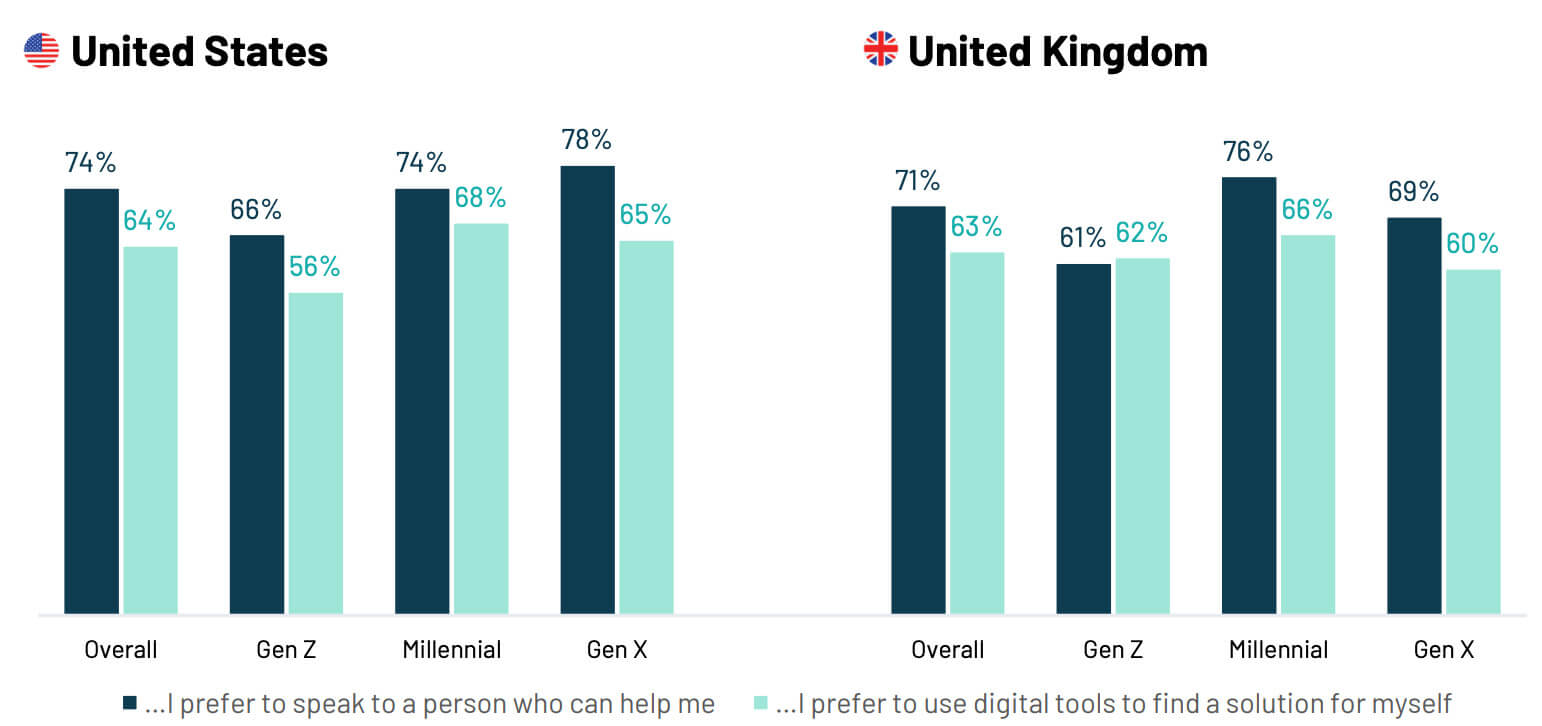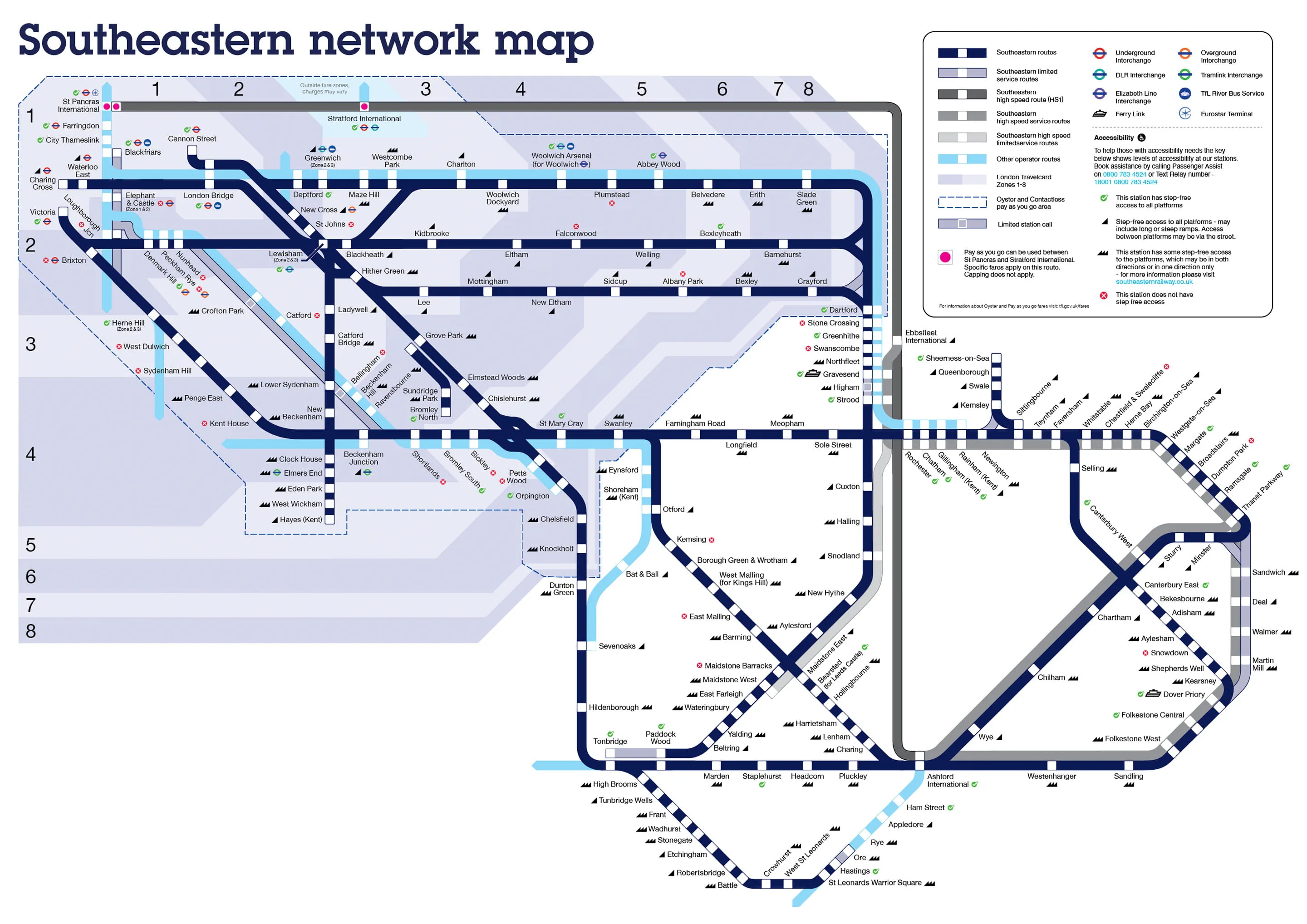Travel Disruption Response Strategies for UK Brands in 2025

Table of Contents
UK travel disruptions are common—and frustrating. In today’s high-stakes online culture, if your team doesn’t handle them well, you can expect complaints splashed across socials.
But it’s often not the delays that cause annoyance. It’s the vague, slow, or missing updates.
UK travellers want clear, fast, compassionate communication so they know what’s going on and what to do next.
With smart social media listening tools to detect issues early, manage your response and monitor impact, you can deliver the right messaging quickly and clearly, transforming a frustration disruption into a chance to showcase exceptional customer service.
What’s changed about managing travel disruptions in the UK?
UK travellers face transport disruption, whether it involves trains, flights or buses. This challenging environment gives transport brands an opportunity: those who invest in responsive communication will readily earn the trust and loyalty of British commuters. In short, you can transform a common industry pain point into a competitive advantage.
Take rail punctuality, for example. Only about 68% of UK trains arrived on time between January and March 2025—a drop from the 72% reported by the Office of Rail and Road in 2022. On top of that, 89% of UK business travellers say that train strikes affected their travel plans in 2024.
For road travel, only 34% of people between 2023 and 2024 were satisfied with local roads in England. This is unsurprising, considering the average delay during the same time period was 46 seconds per vehicle mile. That’s over 15 minutes of added time on a 20-mile trip. Bus operators feel that frustration first-hand, facing route delays, diversions and increased customer expectations for real-time travel updates.
And in the aviation industry, UK air travel is also problematic. There have been two major technical failures in just two years, impacting over 577,000 passengers in 2025 and 700,000 passengers in 2023. Throw in the fact that almost half of all UK air travellers say strikes have interrupted their travel, and it’s no wonder that 91% of UK professionals have changed their business travel habits.
But the problem is that the increase in disruptions means more people changing plans and chasing updates. If your brand can’t deliver the travel updates and customer service that travellers expect, they’ll vent their frustrations publicly online.
How do UK passengers want you to handle disruption?
When it comes to travel management, passengers expect real-time updates: 44% of UK business travellers now monitor travel updates more often. So if your company fails to keep travellers in the loop, you risk losing trust, not because of the disruption itself but because you didn’t tell them fast enough.
When customers don’t know what’s happening, frustration builds, and the first place they turn to is often social media.
On top of updates, travellers want empathetic service in their moment of crisis. Unplanned travel disruptions can feel emotional and stressful, and customers want companies to show that they care enough to iron out the issues.
They’re clear about what kind of support they want too. When things go wrong, 71% of people still want to speak to a person. That said, 63% will try digital tools first if the solution is simple. While they desire empathetic care, delayed travellers also want a quick resolution.
Source: American Express Global Business Travel
Proactive vs. reactive travel disruption management
Travel disruption management procedures in the UK can either be proactive or reactive.
- Proactive teams: spot early signs of issues like strikes, delays, or cancellations, and they act on those signals quickly. They prepare messaging, workflows, and support channels in advance to prevent confusion, and they update passengers directly and clearly.
- Reactive teams: scramble to respond after a disruption hits. This often leads to inconsistent messaging, longer wait times, and higher passenger stress.
In today’s fast-moving travel landscape, customers expect timely updates and proactive care. The brands that win trust are the ones that stay ahead, not the ones playing catch-up.
How can social listening help UK transport brands manage disruption?
Social media listening gives UK transport brands a crucial edge. Rather than waiting for a crisis or controversy to unfold, you can use social listening queries to monitor and manage your brand reputation in real time. This allows your business to design a unified response strategy faster using data.
Think of social listening as an essential, front-line early-warning system. By tracking relevant keywords, people and categories, teams can detect early signs of strikes, cancellations, flight delays or other forms of travel disruption and monitor rising public tension.
But how does social listening help you stay ahead? With tools like Sprouts’ Listening Topics, sentiment filters and Smart Alerts, you can surface signals that matter most.
This is how social listening supports travel disruption management in the UK:
- Offers proactive crisis identification: Use industry-relevant terms to build crisis themes such as mentions of cancelled trains, flight disruptions or extended delays.
- Measures scale: Quantify the crisis using the performance tab to track total message volume, sentiment trends and engagement to understand the scope and measure the effectiveness of your response over time.
- Uncovers the narrative: Identify the most common phrases and the top profiles driving the crisis conversation using the conversation tab.
- Provides contextual detail: Explore individual posts, filter by keyword or sentiment to gain insights about broader volumes and trends.
- Tracks sentiment across regions: Discover the locations where frustrations are growing fastest.
- Ensures internal alignment: Ensure all stakeholders are informed and craft unified responses by quickly sharing listening insights across teams with Social Listening’s link-sharing feature.
In a noisy, fast-moving landscape, real-time travel disruption monitoring is critical, but when it comes to building a strategy, where do you start?
How to build a crisis management listening strategy for UK transport brands?
When travel disruption hits, speed and coordination are critical for transport brands. A strategic listening framework plays a major role in catching a potential crisis before it escalates and causes reputational damage. It also ensures official communications are informed by the actual challenges your customers are facing, shifting the focus from brand protection to the customer-centric approach needed to preserve trust.
Use this three-step framework to move teams and stakeholders from confusion to confidence during a crisis:
1. Detect issues early with crisis management topics
Sprout’s Listening tools surface early signs of disruption on social media, like rising complaints about delays or mentions of rail strikes. This capability allows you to catch a problem earlier and build a proactive response strategy.
To track signs of disruption, teams can set up a theme in the existing Listening topic as soon as you notice any concerning phrases or words. If the conversation continues, create a crisis management topic so all communications related to the issue are in the same place. Crisis themes can include keywords, people or categories.
This approach gives your brand the flexibility to track all the ways a situation could impact your brand and its customers.
2. Quantify the scale and understand the narrative with analytics
Disruptions spark conversation across every channel, and your reputation is on the line in all of them. Use Performance analytics to quickly understand the scale of the crisis through volume and sentiment trends.
Beyond the numbers, use the Conversation and Demographics tabs to identify the phrases and profiles shaping the discussion, giving you the essential data you need to build your strategy.
3. Inform a response that meets passengers where they are
For UK transport brands, where reputation is fragile and public frustration is high, the ability to act with precision is essential.
Use the Messages tab for granular context that directly informs your communications strategy. Then measure the success of your brand statements using sentiment monitoring, all while using the data-sharing feature to guarantee executive and PR teams are immediately aligned on a unified response.
How should transport brands communicate during travel disruptions?
When trains grind to a halt or airlines cancel flights at the last minute, brands need to respond quickly, clearly and with empathy. Otherwise, they risk losing customer trust and loyalty.
These are some ways to communicate plainly and proactively to keep passengers in the loop:
Lead with empathy and a clear solution
According to a 2023 survey on rail passenger experience, unclear “do not travel” messages from rail companies leave travellers confused and unsure of their options. Passengers say they feel misled by vague language and want more detail to make better decisions on what to do next.
But aside from context on why a disruption is happening, passengers also want to know what to do next, what alternatives are available and how to change or refund their tickets.
The report goes on to stress the importance of clarity, empathy and actionable advice in UK customer service crisis communication strategies. When customers know what’s happening and what they should do next, brands maintain trust.
Have messaging templates ready for the most common scenarios
When UK air traffic control systems failed in 2023, the CAA found that poor communication made an already stressful situation worse.
In its review, the CAA pointed to a simple solution: templates and ready-made resources. For instance claim guides, “cheat sheets” explaining rights and automated responses for FAQs would have supported passengers better and helped them feel more informed.
This is where Sprout’s Saved Replies and Shared Content Library help you create and store social media best practices for travel disruptions. With them, travel teams can set up resources in advance so everyone knows when and how to communicate travel delays on social media. That way, you’re ready to respond quickly with pre-approved messages when disruption hits.
Reinforce communication with visuals and updates across multiple channels
The Railway Innovation Awards praised Southeastern Railway’s live disruption map for giving passengers a real-time view of service status. The reason it works? It’s easily sharable.
Customers can easily send it to friends and family, while Southeastern can also use it to clarify disruption messaging. For example, the railway might post it on Facebook or link it in SMS updates like, “Your train at 3:40 p.m. has changed routes—here’s a live map to stay updated.”
Source: Southeastern Railway
These kinds of clear, visual updates are perfect for storing in your Shared Content Library so you’re ready for any disruption scenario.
Then, when the unexpected happens, your team can use the Shared Publishing Calendar to coordinate cross-channel travel disruption messaging. Anyone can jump in to add updates, tweak outdated content or double-check what’s scheduled without slowing down communications.
How can UK transport brands learn and improve after a travel disruption?
The most effective teams treat every crisis as a learning loop and use data and feedback to improve future responses and build trust over time.
Here’s how to use these Sprout capabilities to turn your data into actions and to make informed decisions on post-disruption customer service improvement:
- Tag and analyse common complaints: Use Message Tagging to surface recurring pain points and inform updates to workflows, FAQs and communications.
- Update Saved Replies: Refine your templates based on real passenger language and gaps that the system highlighted during the disruption.
- Debrief with cross-functional teams: Align with operations, communications and legal teams to improve coordination and figure out where internal silos may have caused delays.
- Monitor social listening data: Identify brand mentions and reputation shifts to gauge public reactions during the disruption and use this to refine messaging tone or timing in the future.
Turn travel disruptions into loyalty moments
Travel disruptions happen, and customers understand this, no matter how frustrated they are in the moment. For brands, it’s not the disruption that affects customer loyalty as much as the way your team responds.
Clear updates and a human tone have the power to turn chaos into confidence.
With Sprout’s Listening tools, you can deliver the updates and customer care that travellers expect. That way, you will spot issues early, respond with empathy and clarity and keep messaging consistent across channels. This response shows your customers that they can count on you to get them to where they’re going.
Want to see how it all works in action? Book a Sprout demo and get travel-ready today.




Share